Though it may be an easier job than actually running the miles, crewing an endurance athlete during an event is a significant challenge. The role requires long hours of concentration, organisation and communication.
My first crewing experience involved 24 hours at a cold track in Oslo, where Allan Hovda successfully broke the Norwegian 24-hour indoor record by completing 485 laps (~265km!). Since then, myself and the PF&H team have had the privilege of crewing athletes through races like Western States 100, Ultra Trail du Mont Blanc, Ultra Trail Snowdonia and even World Record attempts. Each athlete and race has brought new lessons, challenges and stories.
This blog combines our biggest takeaways with practical tips to help crews and runners get the most out of their race day…
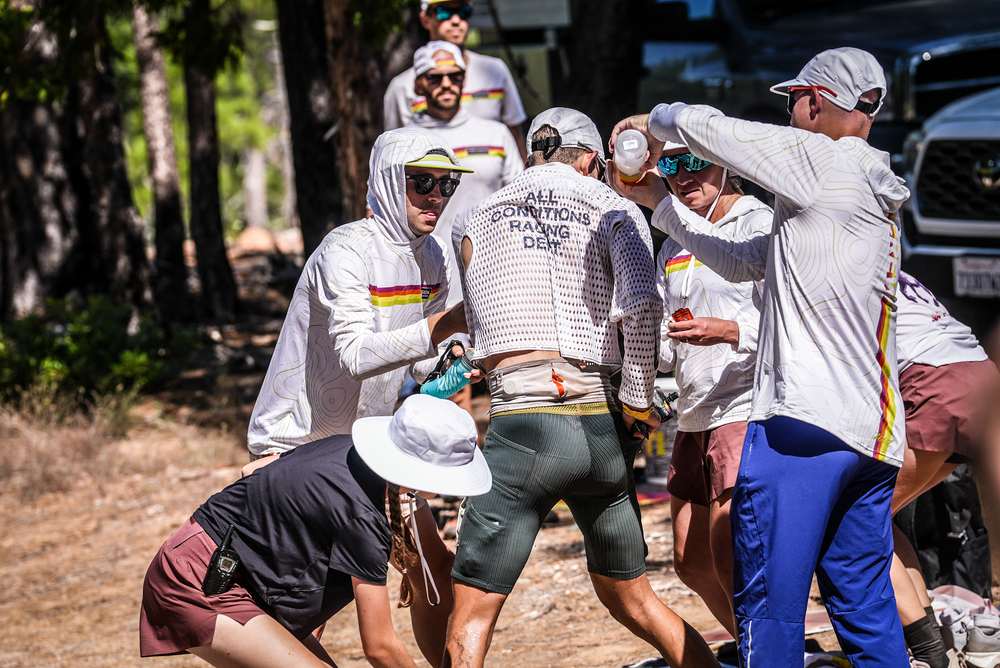
Pre-race crewing tips
Make a plan
The best crews are the ones that are the most organised and prepared for every eventuality. And that preparation starts well before the event, both for the athlete and crew. The more planning that goes on beforehand, the easier and less stressful race day becomes.
In the build-up to the event, the athlete should:
1. Pick your crew. This will be dictated by how many people you need and how many crew members the race rules allow you to have. You’ll want individuals who likely know you well, have experience crewing this or similar races, are well-organised, have nutritional knowledge and know when to push you.
2. Create a race plan. Put this in a shared document or spreadsheet. Detail exactly what you’ll need at each aid station on course and highlight which stations are crewed or uncrewed. Include your estimated time of arrival at each station, based on course distances, elevation and predicted pace.
3. Know and outline your fuel and hydration needs in this doc and include any contingency plans. What will you need in hot vs cold weather? What if you’re slower than your goal pace? What are ‘nice to have’ extras that will provide you with a morale-boost when you need them?
What the crew should do:
- Understand the event rules and course layout
- Get to know the athlete (if you aren’t already acquainted)
- Understand your athlete’s goals for the race
- Familiarise yourself with the athlete’s plan
- Prepare contingency plans in the event that you have to deviate away from the original plan (e.g. injury, underfueling, inclement weather)
Arrange a pre-race meeting
Getting everyone up to speed with the plan in person is a crucial step in the week leading up to race day. Some of the team might not have met before, so gathering to go through the plan is also a chance to get to know one another, arrange roles, logistics, kit and supplies.
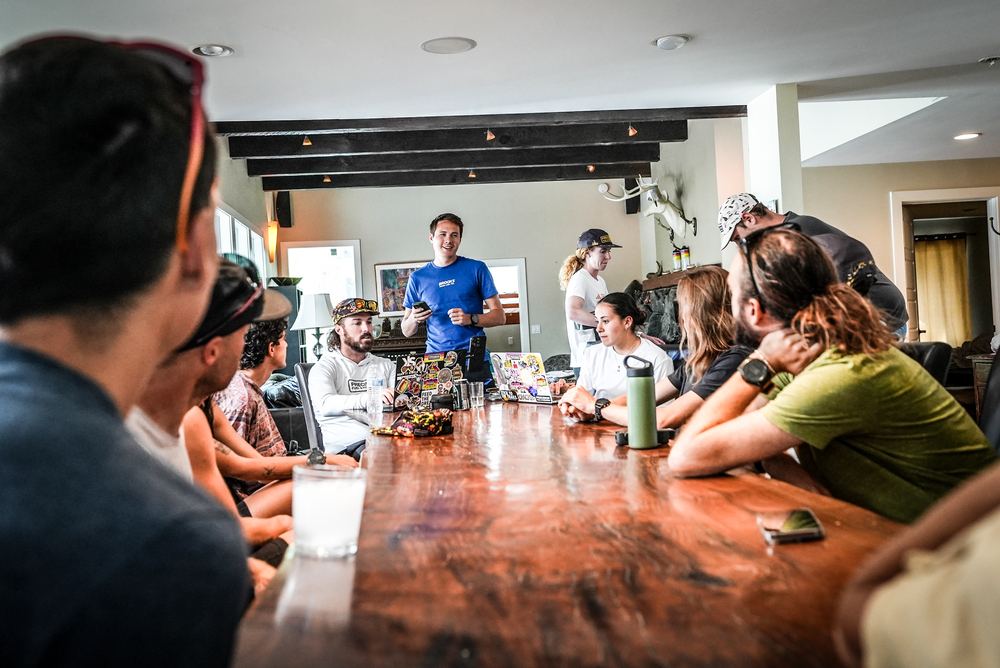
Bring the race plan, gear and supplies you’ve already prepared. If this meeting is the last time you’ll see each other before the race, you’ll need to collect everything from the athlete so you then have it at the aid stations.
Clarify how the athlete wants to be supported during the race. What do they want to hear? Do they plan to stop at each station or keep moving through with you handing everything them everything they need as they keep moving?
Practice hand-offs and get acquainted with packs, belts, pockets and bike set-ups to understand where the athlete wants certain bottles or fuel, or whether they want to be handed items to store themselves.
And then there's the travel logistics to consider. Between traffic, parking and navigating to remote aid stations, race day in the crew car can get chaotic. The more you plan ahead, the less stress you’ll face when time is critical. Here are some key considerations when planning your crew logistics:
Rules:
- Do you need crew or parking passes, and where can you collect them?
- Where are you allowed to crew the athlete?
- TOP TIP: Some races have strict rules on where an athlete can be crewed. And there will also be rules around how many people and cars are allowed in certain areas, so make sure you’re well aware of these pre-race and follow them on the day - you don’t want to be the one who gets your athlete disqualified!
Aid stations:
- Where are the crewed stations and where can you park at each?
- Do you have enough time to be at the start of the event and still be able to get to the first crew stop?
- What time do you need to be at each aid station?
- It’s often easiest to be near the start or the end of an aid station than in a cluster of people fighting for space in the middle. Wear bright colours and bring flags to make it easier for your athlete to spot you!
- It's a good idea to work backwards from estimated aid station arrival times, factor in traffic and the chance your athlete will be way ahead or behind their predictions. Arriving early reduces stress!
- TOP TIP: A WhatsApp group is helpful when you have multiple crew teams to communicate with. You’ll want to relay information about how the athlete is doing and what they want at the next crew stop. Signal is never what you want it to be at mountainous ultra races though, so send messages with time stamps!
Vehicles and navigation:
- How many crews and vehicles do you have and who will be driving?
- Will there be traffic on route and what is the best route to each station?
- How long will it take you to walk/hike to the station from where you’ve parked?
- Will your phone have signal to be able to access maps?
- TOP TIP: Download offline maps of the race areas and save pins for each aid station
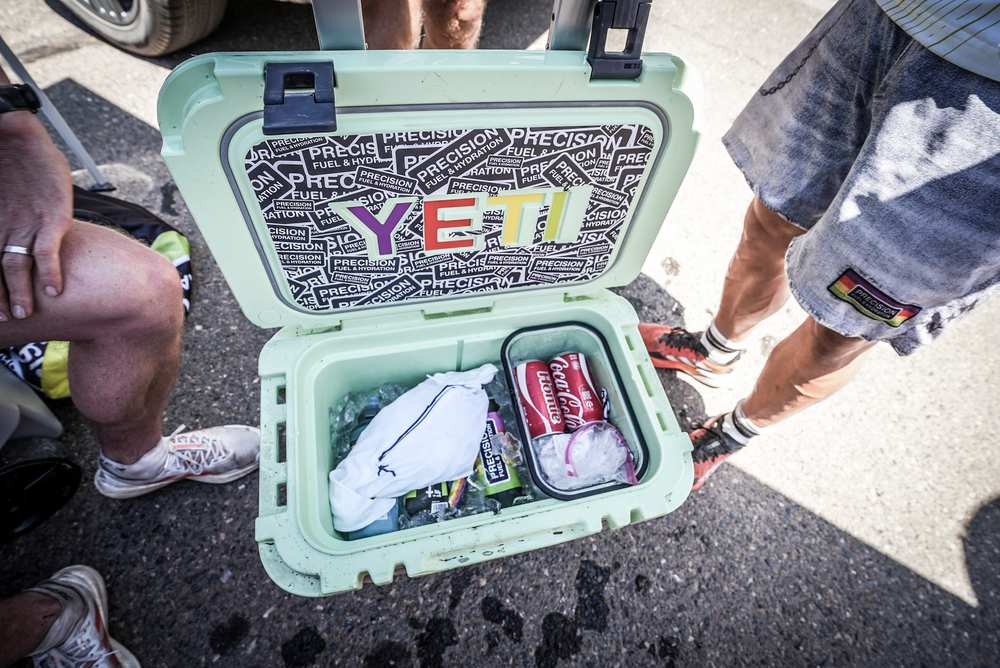
Prepare ‘the mothership’
Your car-full of supplies is the heart of the operation on race day. If it’s well stocked and well organised, everything else runs more smoothly. Here are some examples of what ‘the mothership’ should contain:
- Athlete’s kit (pre-packed by them): spare clothes (including options for variable weather conditions), shoes, headphones, hats
- Medical kit: suncream, blister kit, medications, vaseline
- Crew supplies: snacks and drinks for the crew, portable chargers, maps, passes, head lamps
- Coolers containing: Water - as much as you can carry. Ice - important for keeping both drinks and the athletes cool at hot races. Fuel and hydration (prepared pre-race): Gels, Drink Mixes, Chews, Electrolyte Capsules, cola, real food options and back-ups
TOP TIP: Use large, clear sandwich bags to split up the athlete’s supplies for each crewed aid station. Write exactly what’s in each and which aid station the bag is for.

How to crew an endurance event
Assign clear roles at aid stations
Each crew member having a clear role can make a huge difference at busy aid stations.
When it comes down to it, having assigned roles can make the high pressure moments when you’re handing the essentials off to your athlete easier.
Here are some examples of roles within a crew:
- Team leader: provide clear information to the athlete and make sure everyone in the crew knows their role
TOP TIP: Have one member of the crew who talks to the athlete so lots of voices aren’t talking over one another. Try not to ask the athlete questions. Instead, talk in clear statements and have options for food, drink or kit that the athlete had on their plan laid out for them to point at.
It’s helpful to take everything on the athlete's plan (and some back-ups) to the aid station and lay out their kit and supplies in one spot, such as on a towel.
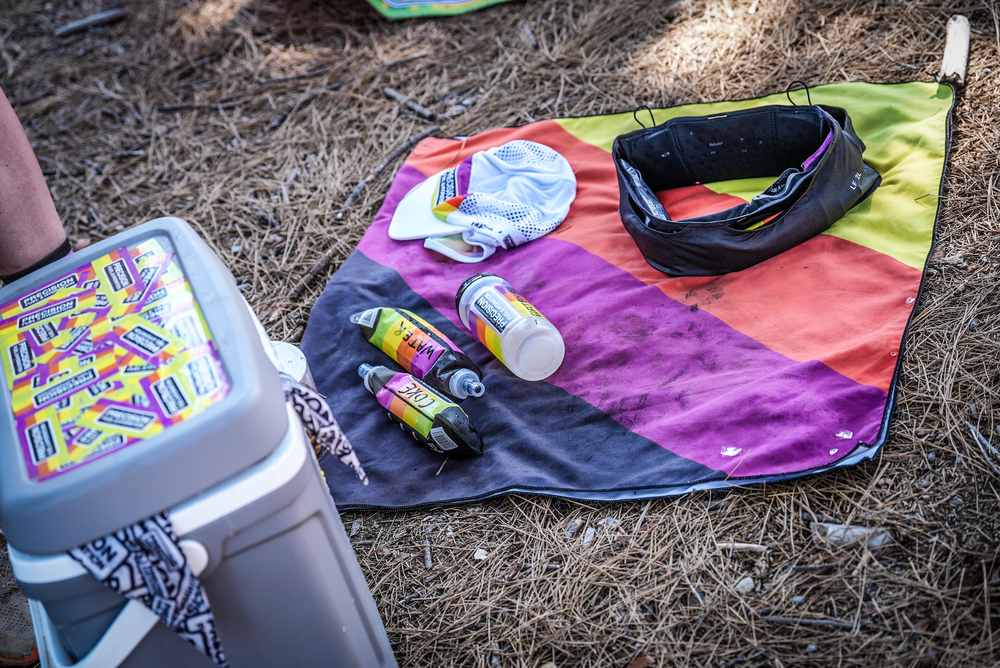
- Fuel-focused crew member: clear rubbish and hand over new gels and food.
- Hydration-focused crew member: pass over bottles, packs or belts with soft flasks in
- Cooling crew: keep your athlete cool with ice and water. At hot races, keeping your athlete cool is one of the crew’s top priorities as it can make or break their day. To do this, apply ice and water to the head, back of the neck and forearms. Ice bandanas, ice caps, sponges, cold drinks and shaded rest spots can all make a huge difference
- Pacers: pace the athlete between aid stations (more on this below)
- Spotter: if you have extra hands on deck then a pair of eyes at the start of the aid station to look out for your athlete and direct them to the rest of the crew can be extremely helpful.
Chris Myers, who took 2nd place at Western States in 2025, told us:
I always have a crew chief, someone for nutrition and hydration and another for cooling.
Anticipate your athlete's needs
The best crews are one step ahead, and prepared for every eventuality. Race dynamics can change quickly, so the crew needs to be flexible.
Tracking details like your athlete’s fuel and fluid intake will help you solve problems as they arise (i.e. you can recognise if they’re underfueling or overfueling).
TOP TIP: Collect and keep track of everything your athlete gives back to you at aid stations, including how much is left in their bottles and gel wrappers, so you know if they’re following their plan. You can then adjust the plan accordingly if you spot that they're under-fueling or over-fueling.
Check out the blogs below to learn more about things that can go wrong and what can be done to avoid and overcome those scenarios:
- How to tell if you’re dehydrated
- What happens when you ‘bonk’ (and how to avoid it)
- Why do athletes suffer from cramp?
- What is hyponatremia and how can you avoid it?
Have a pacing plan
If pacing is allowed during a race, a pacer can help an athlete stick to their target pace, as well as provide a huge mental lift.
How you pace should be determined by the athlete and may vary from person-to-person, and even race-to-race.
Chatting to Kevin Cannaday, experienced racer, pacer and crew chief for Rachel Entrekin’s Cocodona 250 win in 2025, he explained: "The first thing you need to ask is whether or not they want you to run in front or behind. Some people want to be pulled, like true pacing, let’s set a pace and you keep up with me."
"But, that doesn’t always work, especially for longer races. Instead, do they want you to run behind them? Who is driving the pace? What feedback does the athlete want? Does the athlete want you to talk to them, do they want to hear stories or hear about the race like Rachel did? Some people don’t want to know that.
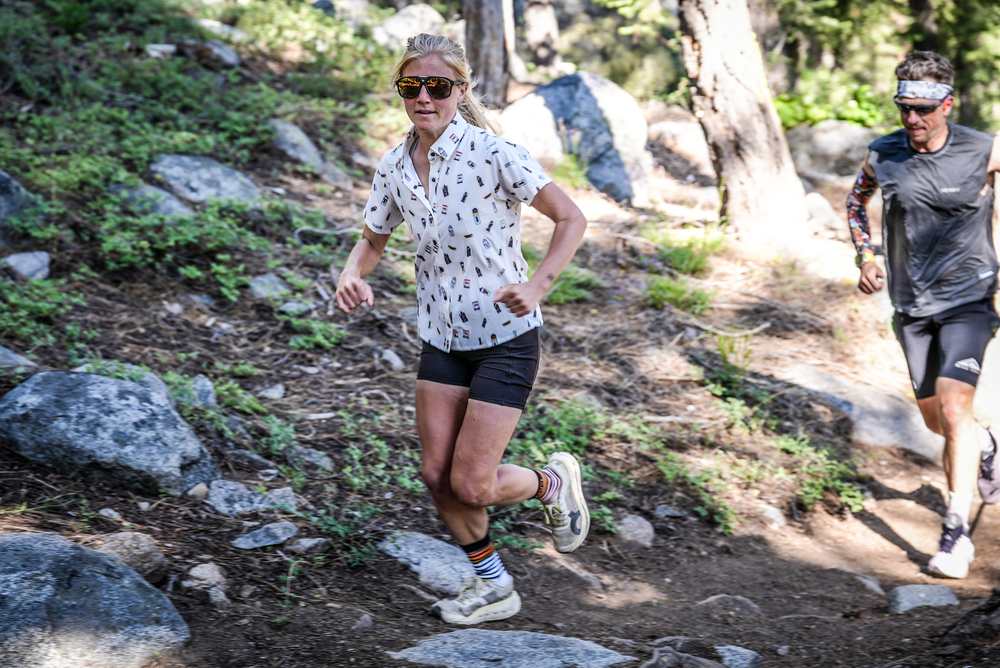
TOP TIP: (from Kevin): “It’s helpful for the pacer to know the runner’s plan and if they have tiered goals. So, say we’re shooting for 20 hours but that isn’t looking feasible, what is the next goal? Is it 22 hours or is it just to finish? Do they want to start pushing on and moving up and picking people off after a certain point in the race? It can be like a little game to play with your runner. Or as Rachel calls it ‘hunting’!”
Be positive
As a crew, you only see your runner for a small proportion of their race, but in this time, your tone, information and vibes can have a big impact. It’s better if the athlete hears one clear and calm voice at a time. But, depending on the time of race, the race dynamics, and how they’re feeling, your athlete may want to hear certain things.
Rachel Entrekin, told me:
Crew attitude is really important. I know that was a big thing for me during Cocodona. I didn’t want to have to worry that there was a mutiny in the crew whilst I’m out there running. I want these people to be able to have a good time together and vibes to be high the whole time I’m out there. If I ask my crew a question, I want the answer and I want it to be honest. I want the straight facts to help me make decisions, but not every runner is like that as some don’t want to know what position they’re in or how far ahead the next person is.
Look after yourself
The chaos of crewing can make it tricky for the crew to remember to look after themselves. However, to best look after your runner, you need to be alert when it matters most and so it’s important you stay well fueled, hydrated and rested.
Bring plenty of snacks and drinks specific for the crew (including some caffeine!), not just the athletes' leftovers. Plan for bathroom breaks and naps in the schedule of crewing, and make use of longer gaps between stations.
To give you a taste of what an on-the-go crew intake might look like, here’s the numbers that Team PF&H Captain Brad Williams' hit when he crewed Chris Myers to his runner-up finish at Western States.
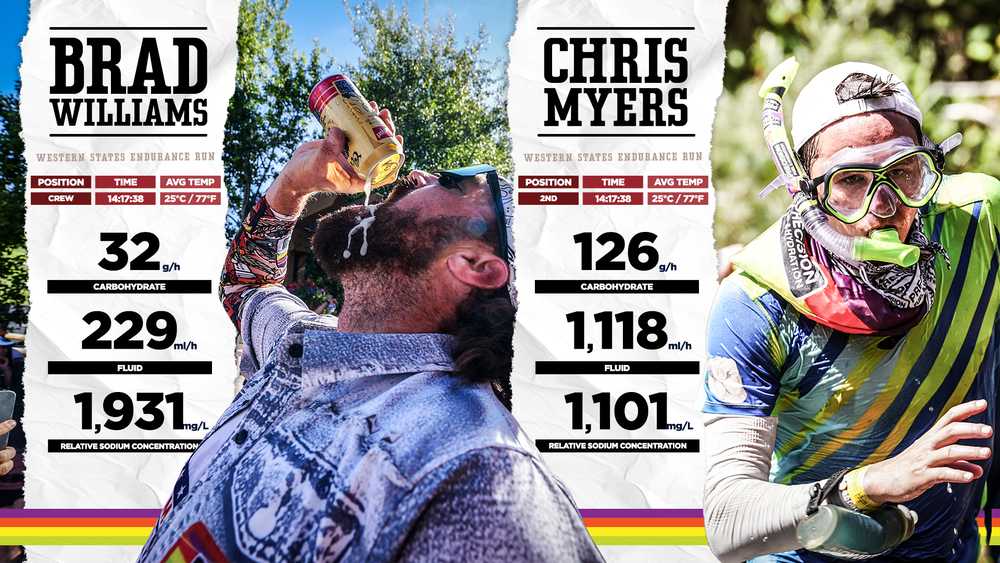
And here's how Brad's race day intake compared with Chris's...
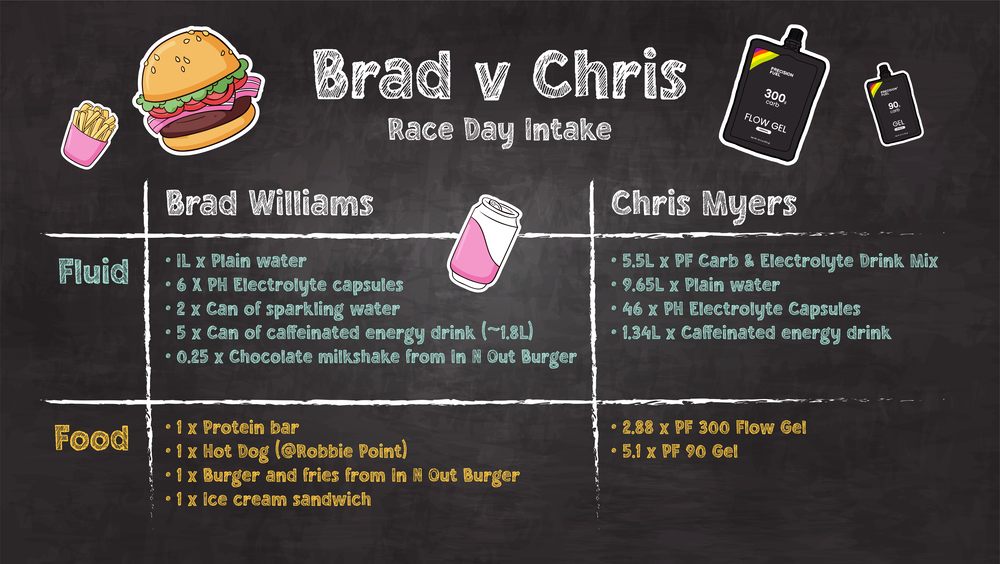
We actually collected the intakes of our seven crew members and six athletes at Western States in 2025 and here's how their average total intakes compared:
| Crew | Athletes | |
|---|---|---|
| Carbohydrate | 294g | 1,504g |
| Fluid | 3.9L | 13.3L |
| Sodium | 2,725mg | 11,198mg |
| Caffeine | 366mg | 510mg |
Crewing an ultra endurance event won’t always go to plan. It takes time, energy and plenty of preparation, but it’s extremely rewarding when you see your athlete cross the finish line.
Following the tips above should give you a great chance of success as a crew, and if you want more advice from athletes and crew chiefs alike, then you can book a free one-to-one video consultation with one of our team, or drop us an email at hello@pfandh.com.
